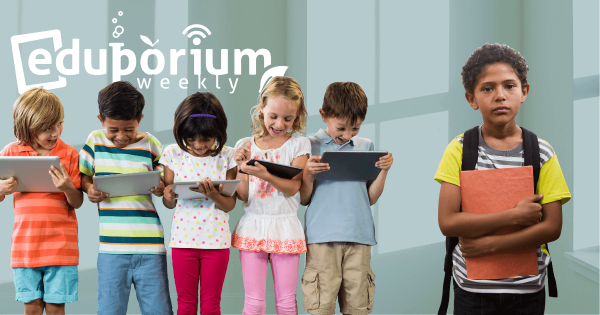It remains unfortunate that kids can no longer use the Google Expeditions app to find engaging and immersive lessons, tours, and experiences. The good news, however, is that the Expeditions 2.0 platform from RobotLAB makes a very reliable alternative. With a variety of classroom VR kits and others with AR, these solutions work great in 21st century schools.
Search results for '8 educational'
-
Eduporium Weekly | The Digital Divide And Learning
It has now been slightly over three years since the pandemic first shook up the education world. Beyond initial struggles with administering emergency instruction and too many parents worrying about kids losing academic and social development, another key factor emerged. We knew there was a big digital divide among our students, but didn’t realize how bad it really was. -
Eduporium Weekly | Culturally Responsive Teaching
We now have so many unique teaching styles and strategies for effectively communicating curricular content to your kids, including teacher-centered, student-centered, self-paced, competency-based, and even inquiry-based models among others. Then, there is culturally responsive teaching, which involves shifting instruction and language for kids from different cultures. -
Tips & Tricks | The mBot-S From Makeblock
The mBot-S is one elementary robotics tool that’s perfect for students who want to build a robot before coding. For any educators throughout the K–8 grades, it’s a great tool for incorporating STEAM experiences into activities that highlight creative development as kids enjoy valuable experience with engineering and collaborating while building a real robot from scratch. -
Rising Resources | The Quizlet Live Assessment Game
Quizlet Live is a collaborative classroom game that your students can play together from their own devices. They could use it in the same classrooms or when studying from home—perfect for accommodating review efforts at all different times. To get started with Quizlet Live, teachers can just create a Quizlet account and they’ll get a Quizlet Live code to share -
Eduporium Weekly | Coding For Kids Of Different Ages
There are typically two primary options for younger kids (or older students) to get started with coding: either physical tools or digital tools. Most of our expertise involves the physical coding tools, including educational robotics kits, circuitry solutions, or even programmable drones. Especially following the remote learning era, however, there are also strictly virtual platforms. -
Rising Resources | Using Oodle Like Wordle For Math
If you are familiar with Wordle, the Oodle math game is very similar. Instead of guessing those 5-letter words without much context, however, kids have to build out an equation that’ll work with the answer they were given. So, if the answer to a puzzle is 41, they’d have to figure out all other elements to the equation in six -
Eduporium Weekly | Figuring Out The Achievement Gap
When we talk about achievement gaps in education, we’re usually referring to measurable variance in achievements among students from different but often inherent groups. These include gaps in grades, attendance, and even soft skills development, and how not having truly equitable opportunities is affecting them. Moving forward, preventing and shrinking said gaps is key. -
Tips & Tricks | The Bee-Bot Robot From Terrapin
Students in Pre–K, kindergarten, and up to first or second grade could use the Bee-Bot screen-free or mix in digital coding once they’re ready for new challenges. It’s simple coding system features directional buttons, allowing younger children to explore programming right on their classroom floors as they experience age-appropriate STEAM adventures in early education. -
Eduporium Experiment | Root rt0 Coding Robot
Similar in both appearance and functionality to the original Root Robot, the Root rt0 allows educators to deliver hands-on STEAM experiences that are practical and relevant. And, although they do look similar, there are several key differences teachers should know. Once you are up to speed, however, it's a fantastic addition to coding lessons throughout the K–12 grades.












